Overview:
Poland, located in Central Europe, is a country rich in history, vibrant culture, and breathtaking landscapes.
From UNESCO World Heritage sites to stunning natural wonders, this captivating nation has something for every type of traveler.
Whether you’re interested in medieval architecture, historical sites, or beautiful countryside, Poland will captivate you with its blend of old-world charm and modern appeal.
Let’s explore the top 15 tourist attractions in Poland and discover why each deserves a place on your itinerary.
Table of Contents
1. Wawel Castle, Kraków
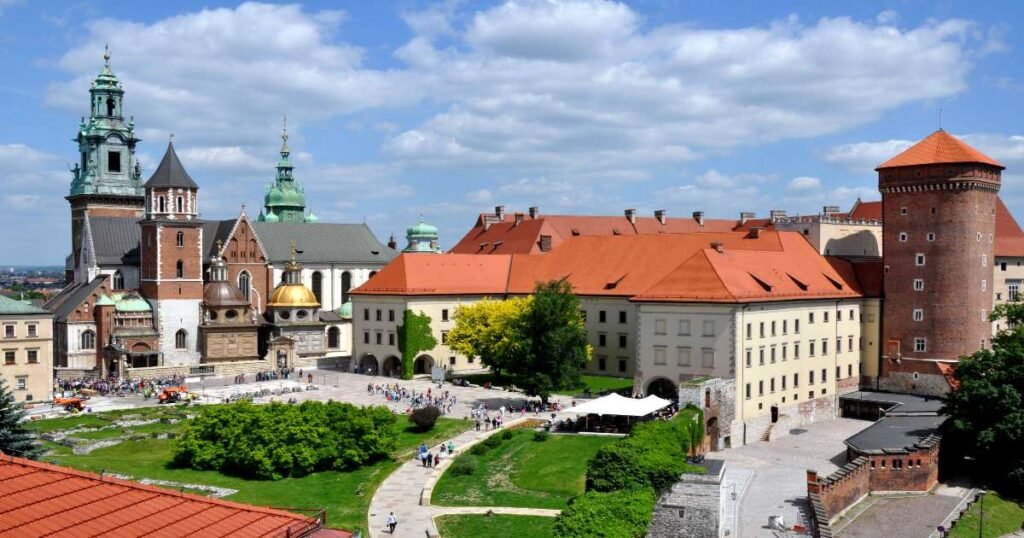
Introduction: Overlooking the Vistula River, Wawel Castle is one of Poland’s most iconic landmarks. This Gothic castle, perched on Wawel Hill, once served as the residence of Polish kings and queens.
Historical and Cultural Significance: Wawel Castle has been a symbol of Polish royalty and independence for centuries. It houses historical artifacts, art collections, and the famous Wawel Dragon legend.
Unique Features: The State Rooms, Royal Private Apartments, and Crown Treasury & Armory are must-sees.
Best Time to Visit: April to October
Travel Tips:
- Transportation: Located in Kraków’s Old Town, easily accessible by tram or walking.
- Accommodations: Stay in Kraków’s Old Town for easy access.
- Local Customs: Be respectful inside religious and royal spaces, as many locals view the castle as a place of national pride.
2. Auschwitz-Birkenau Memorial and Museum, Oświęcim

Introduction: This UNESCO World Heritage Site in Oświęcim is a memorial to the victims of the Holocaust, bearing witness to one of the darkest chapters in human history.
Historical and Cultural Significance: Auschwitz-Birkenau was a concentration and extermination camp during WWII. The museum preserves the memory of the victims, offering educational exhibits on the Holocaust.
Unique Features: Visit the barracks, gas chambers, and exhibitions showcasing the personal belongings of victims.
Best Time to Visit: Year-round, though spring and fall have smaller crowds.
Travel Tips:
- Transportation: Take a train or bus from Kraków, about an hour away.
- Accommodations: Oświęcim has several small hotels for overnight stays.
- Local Customs: Silence and respect are strictly observed at this site.
3. Old Town, Warsaw

Introduction: Warsaw’s Old Town, painstakingly rebuilt after WWII, is a UNESCO World Heritage site filled with vibrant squares, colorful facades, and historic landmarks.
Historical and Cultural Significance: This area symbolizes Poland’s resilience. Destroyed during WWII, it was meticulously restored to its original appearance, preserving a piece of Polish heritage.
Unique Features: Don’t miss the Royal Castle, Market Square, and St. John’s Arch Cathedral.
Best Time to Visit: May to September for pleasant weather.
Travel Tips:
- Transportation: Accessible by tram, metro, and bus within Warsaw.
- Accommodations: Stay near Old Town or central Warsaw for convenience.
- Local Customs: Polish people are welcoming but appreciate respect for history, especially around WWII-related sites.
4. Wieliczka Salt Mine, Wieliczka
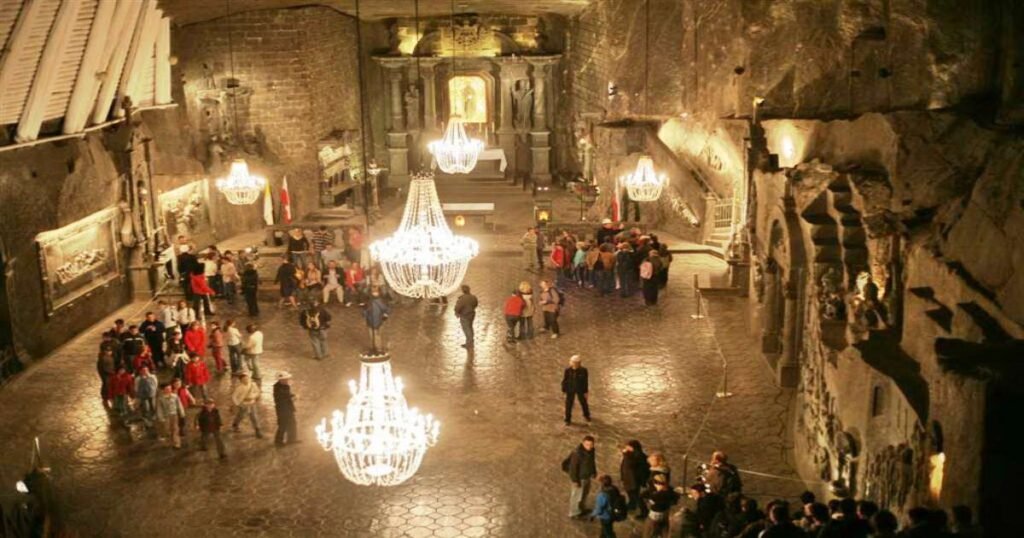
Introduction: This underground marvel, near Kraków, is one of the world’s oldest salt mines, dating back to the 13th century, and also a UNESCO site.
Historical and Cultural Significance: Wieliczka Salt Mine is renowned for its underground chapels, sculptures, and lakes carved entirely from salt.
Unique Features: Highlights include the Chapel of St. Kinga and stunning salt chandeliers.
Best Time to Visit: Year-round
Travel Tips:
- Transportation: Easily accessible by bus or train from Kraków.
- Accommodations: Kraków offers numerous accommodation options for day trips.
- Local Customs: Wear comfortable walking shoes, as tours cover several kilometers underground.
5. Tatra Mountains and Zakopane
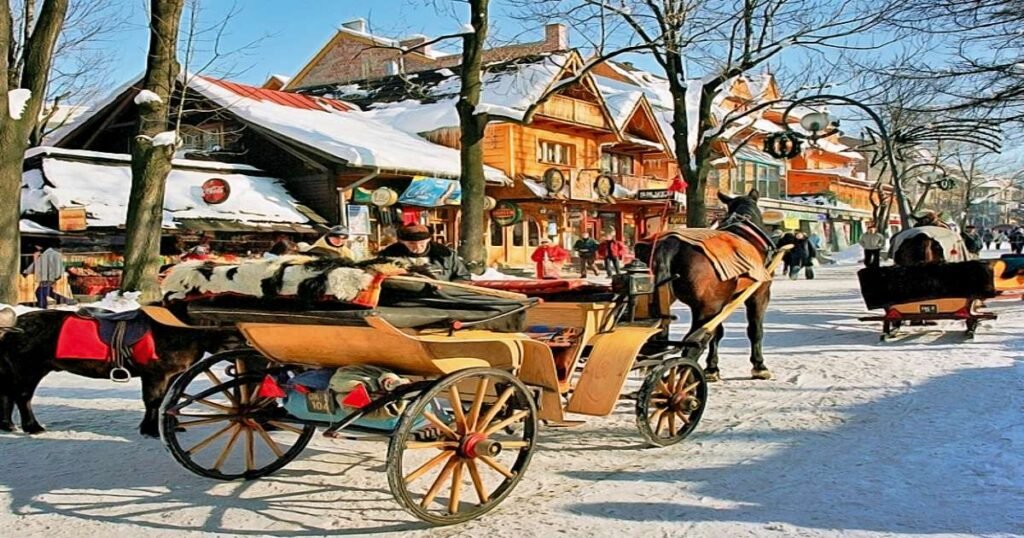
Introduction: The Tatra Mountains offer some of Poland’s most breathtaking natural scenery. Zakopane, at the foot of the Tatras, is a charming mountain resort town.
Historical and Cultural Significance: The Tatra Mountains are part of the Carpathian range and serve as a symbol of Polish nature. Zakopane is the heart of Polish mountain culture.
Unique Features: Hiking trails, Morskie Oko Lake, and Gubałówka Mountain are popular attractions.
Best Time to Visit: Winter for skiing; summer for hiking.
Travel Tips:
- Transportation: Zakopane is accessible by bus or train from Kraków.
- Accommodations: Book in advance during peak seasons; Zakopane has many guesthouses and hotels.
- Local Customs: Zakopane has its own unique Highlander culture; be respectful of local traditions.
6. Malbork Castle

Introduction: This medieval fortress, the largest brick castle in the world, is an architectural masterpiece and a UNESCO World Heritage site.
Historical and Cultural Significance: Built by the Teutonic Knights, Malbork Castle represents Gothic architectural prowess and Poland’s medieval heritage.
Unique Features: The castle complex includes the High Castle, Middle Castle, and an impressive museum.
Best Time to Visit: May to September for guided tours.
Travel Tips:
- Transportation: Take a train from Gdańsk, about an hour away.
- Accommodations: Malbork has several guesthouses or stays in nearby Gdańsk.
- Local Customs: The castle is well preserved; be mindful of designated tour routes.
7. Białowieża Forest

Introduction: As Europe’s last primeval forest, Białowieża is a haven for biodiversity, home to the endangered European bison.
Historical and Cultural Significance: This UNESCO site is an ancient forest, representing Europe’s natural history and a symbol of conservation efforts.
Unique Features: Wildlife tours, bison observation, and dense forest trails.
Best Time to Visit: Late spring or early fall for wildlife sightings.
Travel Tips:
- Transportation: A car is the most convenient; public transportation is limited.
- Accommodations: Stay in Białowieża village for easy access.
- Local Customs: Respect conservation rules; avoid straying off marked paths.
8. Wrocław’s Market Square
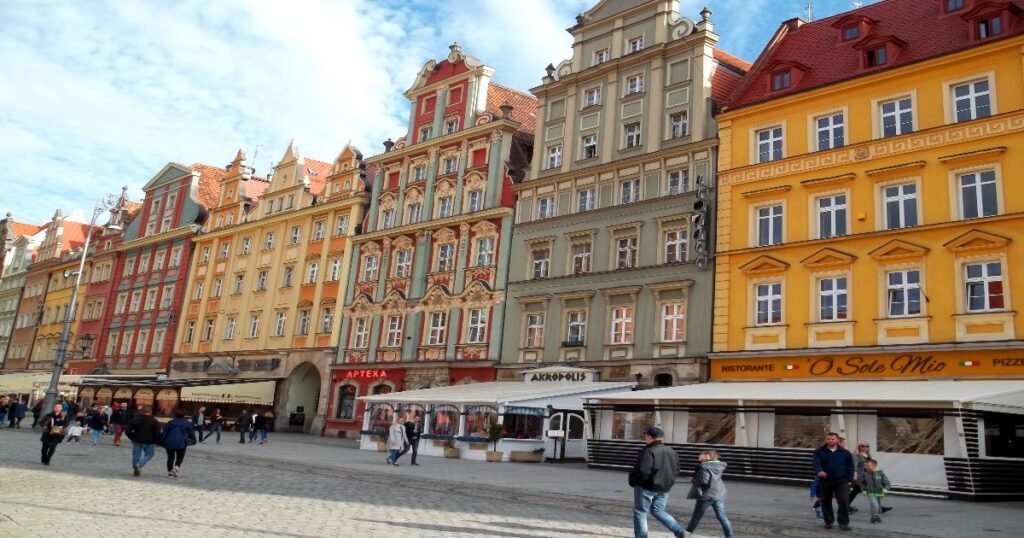
Introduction: Wrocław‘s Market Square, one of Europe’s largest, is a lively hub of activity with Gothic, Renaissance, and Baroque architecture.
Historical and Cultural Significance: This square reflects the city’s multicultural heritage and its history as part of Bohemia, Austria, Prussia, and Germany.
Unique Features: The Gothic Old Town Hall and colorful townhouses.
Best Time to Visit: May to September; December for Christmas markets.
Travel Tips:
- Transportation: Easily accessible by bus, tram, or walking.
- Accommodations: Stay in Wrocław’s Old Town for central access.
- Local Customs: Expect friendly hospitality; tipping in restaurants is common.
9. Gdańsk Old Town

Introduction: The charming Old Town of Gdańsk, nestled along the Baltic coast, is known for its maritime history and scenic riverside views.
Historical and Cultural Significance: Gdańsk played a significant role in the Hanseatic League and later became the birthplace of the Solidarity movement.
Unique Features: Don’t miss Long Market, Neptune Fountain, and St. Mary’s Church.
Best Time to Visit: June to August for warm weather.
Travel Tips:
- Transportation: Accessible by foot; use local trams or buses.
- Accommodations: Stay in or near the Old Town for easy access to attractions.
- Local Customs: Be aware that Gdańsk has a blend of Polish and German history; locals are proud of their heritage.
10. Masurian Lake District

Introduction: The Masurian Lake District, a picturesque region in northeastern Poland, is renowned for its chain of over 2,000 lakes, lush forests, and quaint villages, making it a top destination for nature lovers and water sports enthusiasts.
Historical and Cultural Significance: The lakes have been central to local folklore and traditions, with some dating back to ancient glacial periods. This region also has WWII historical sites, including Wolf’s Lair, Hitler’s wartime headquarters.
Unique Features: Visitors can enjoy kayaking, sailing, and exploring beautiful trails, as well as visiting historical sites like Wolf’s Lair.
Best Time to Visit: June to September for boating and outdoor activities.
Travel Tips:
- Transportation: Renting a car is most convenient, though buses connect some major towns.
- Accommodations: Masuria has lakeside cottages, guesthouses, and eco-friendly lodges.
- Local Customs: It’s common to greet people warmly in smaller villages; and respect local nature conservation rules.
11. Jasna Góra Monastery, Częstochowa
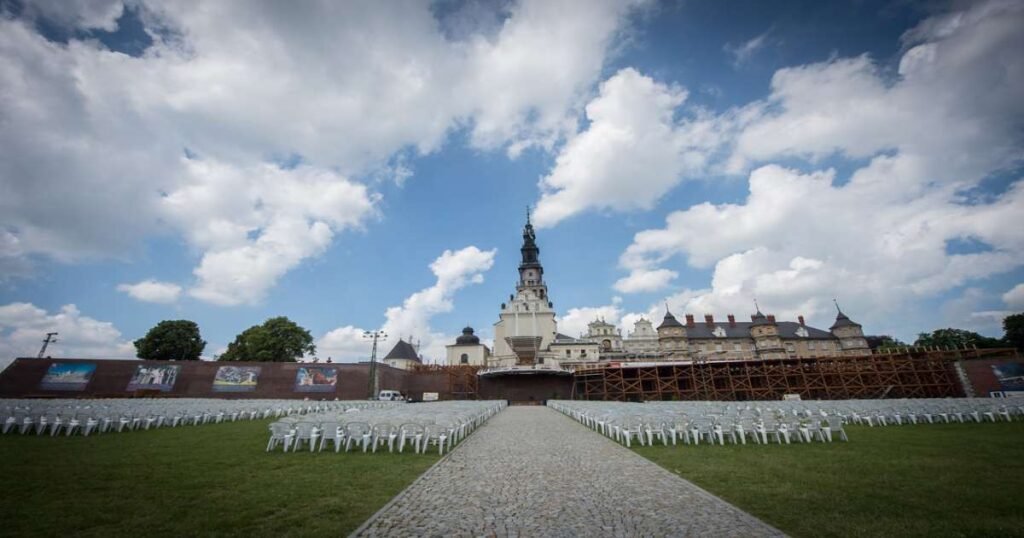
Introduction: Jasna Góra Monastery in Częstochowa is Poland’s most important pilgrimage site, famous for housing the revered Black Madonna icon.
Historical and Cultural Significance: Since the 14th century, the Black Madonna icon has been associated with miracles and Polish independence, symbolizing resilience and faith. Jasna Góra has been a spiritual center for Polish Catholics and a site of pilgrimage for centuries.
Unique Features: The monastery complex includes the Basilica, the Chapel of the Black Madonna, and a 106-meter tower.
Best Time to Visit: May and August (Feast of the Assumption) for pilgrimage events.
Travel Tips:
- Transportation: Accessible by train from major cities like Kraków and Warsaw.
- Accommodations: Częstochowa has various options, from budget to mid-range hotels.
- Local Customs: Respectful attire is encouraged inside the monastery, especially in religious areas.
12. Torun Old Town
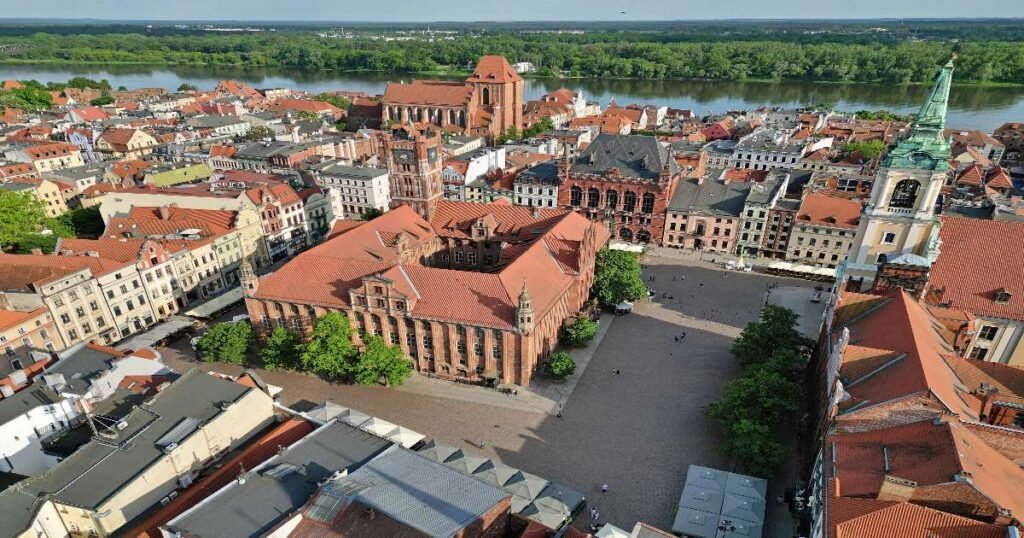
Introduction: Toruń, a medieval town on the Vistula River, is known for its beautifully preserved Gothic architecture and as the birthplace of astronomer Nicolaus Copernicus.
Historical and Cultural Significance: Toruń’s Old Town is a UNESCO World Heritage site, famous for its historical significance as a medieval trading hub and its connection to Copernicus.
Unique Features: Don’t miss Copernicus House, the Leaning Tower, and the Gingerbread Museum, a nod to Toruń’s famed gingerbread tradition.
Best Time to Visit: May to September for pleasant weather and outdoor activities.
Travel Tips:
- Transportation: Trains from Warsaw and Gdańsk connect to Toruń.
- Accommodations: Old Town hotels offer proximity to attractions.
- Local Customs: Tasting the local gingerbread is a must; it’s a tradition the locals take pride in.
13. Książ Castle
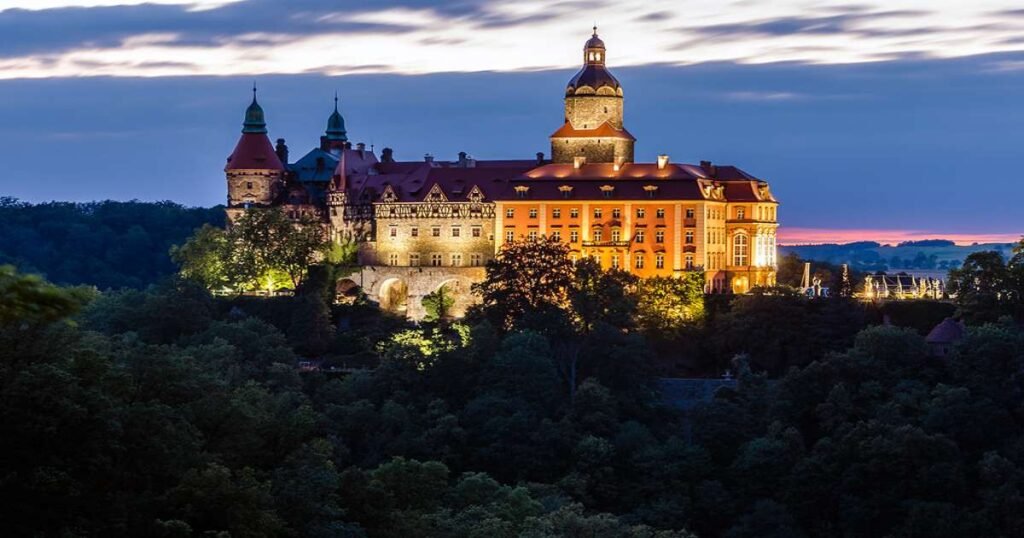
Introduction: Nestled in the forests of Lower Silesia, Książ Castle is Poland’s third-largest castle, known for its striking architecture and picturesque setting.
Historical and Cultural Significance: Built in the 13th century, Książ Castle has hosted various nobles and even served as a headquarters for Nazi forces during WWII. Its blend of architectural styles reflects its long, complex history.
Unique Features: Visitors can explore the castle’s terraces, baroque interiors, and a network of WWII-era underground tunnels.
Best Time to Visit: Spring or early autumn for vibrant gardens and fewer crowds.
Travel Tips:
- Transportation: Accessible by train to Wałbrzych, followed by a bus or taxi.
- Accommodations: Stay in Wałbrzych for easy access.
- Local Customs: Photography is allowed in most areas, but be mindful in certain sections where restrictions apply.
14. Poznań’s Old Market Square

Introduction: Poznań’s Old Market Square, one of Poland’s oldest, is vibrant and colorful, full of cafes, museums, and historical buildings. The city is often considered the birthplace of Poland.
Historical and Cultural Significance: Poznań played a significant role in Poland’s early history as a trade and cultural hub. The Old Market Square is surrounded by Renaissance-style buildings, including the iconic Town Hall with its famous goats.
Unique Features: The Town Hall’s daily mechanical goat show at noon, colorful merchant houses, and interactive historical displays.
Best Time to Visit: May to September; December for holiday markets.
Travel Tips:
- Transportation: Easily accessible by tram or bus within Poznań.
- Accommodations: Old Town offers various hotel options for easy access to the square.
- Local Customs: Join the locals at noon for the famous goat show; it’s a beloved local tradition.
15. Bieszczady Mountains

Introduction: Known for their untouched wilderness and stunning landscapes, the Bieszczady Mountains in southeastern Poland offer a tranquil escape from urban life, ideal for hiking and reconnecting with nature.
Historical and Cultural Significance: Historically a border region, Bieszczady has a mix of Polish, Ukrainian, and Slovak heritage. Its rugged terrain also holds remnants of villages abandoned during WWII and post-war resettlements.
Unique Features: Highlights include hiking trails, Polonina Carynska and Polonina Wetlinska (grassy ridges with panoramic views), and the unique wooden Orthodox churches.
Best Time to Visit: Autumn for stunning foliage; summer for clear hiking trails.
Travel Tips:
- Transportation: A car is recommended due to the remote location; public transport is limited.
- Accommodations: Stay in small guesthouses in villages like Ustrzyki Górne or Wetlina.
- Local Customs: The area is ecologically sensitive, so leave no trace, and respect wildlife and local customs around protected areas.
Also Read: Top Tourist Attractions In Albania
Conclusion
Poland offers an incredible variety of attractions, from awe-inspiring historical sites and medieval castles to untouched natural landscapes and vibrant city centers.
From the vibrant cities of Kraków and Warsaw to the serene beauty of the Bieszczady Mountains, Poland invites you to discover its treasures and immerse yourself in its unique traditions and landscapes.
Whether you’re exploring medieval castles, sailing on picturesque lakes, or hiking in pristine forests, Poland offers a memorable experience for every traveler.
Poland’s heart and soul are deeply rooted in its history and its people, making it an unforgettable destination for travelers.
FAQs
1. What should I pack for a trip to Poland?
Poland has a temperate climate, so pack seasonally. For summer, lightweight clothes with layers for cooler evenings; for winter, warm clothing and waterproof gear, especially for mountainous areas.
2. Is English widely spoken in Poland?
English is commonly spoken in major cities and tourist areas. In rural regions, knowing basic Polish phrases is helpful.
3. Are Poland’s tourist sites accessible to travelers with disabilities?
Many historical sites and newer attractions are wheelchair accessible, but older, preserved areas may have limited accessibility. It’s advisable to check in advance.
4. What’s the currency and payment method in Poland?
Poland uses the Polish złoty (PLN). Credit cards are widely accepted, but keep cash for smaller towns and rural areas.
5. What are some local dishes to try in Poland?
Pierogi (dumplings), bigos (cabbage stew), and veg żurek (sour rye soup) are traditional Polish dishes worth trying. Each region has unique specialties, so explore the local cuisine.
6. What is the best time to visit Poland?
Spring (April to June) and early autumn (September to October) are ideal for comfortable weather and fewer crowds.
7. Is Poland safe for tourists?
Yes, Poland is generally safe. However, as with any destination, always be aware of your surroundings and follow local guidelines.
8. Do I need to know Polish to travel to Poland?
While it’s helpful, many Poles speak English in tourist areas. Learning a few Polish phrases can go a long way, though.
9. What currency is used in Poland?
Poland uses the Polish złoty (PLN).
10. Can I use public transportation to travel between cities?
Yes, Poland has an extensive train and bus network connecting major cities.

